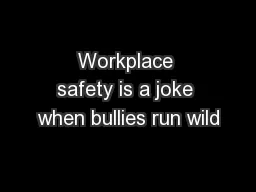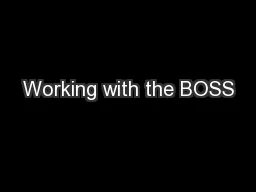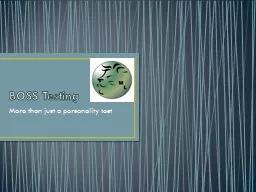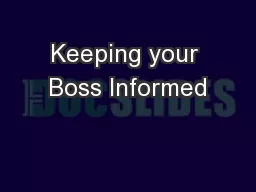PDF-WHITE PAPER How to Be the Boss without Being the Bword
Author : natalia-silvester | Published Date : 2015-05-08
Crumbacher Julia Fernando and William A Bill Gentry brPage 2br Contents Executive Summary Whos the Boss and Whos Bossy What Does It Really Mean to Be a Bossy Leader
Presentation Embed Code
Download Presentation
Download Presentation The PPT/PDF document "WHITE PAPER How to Be the Boss without B..." is the property of its rightful owner. Permission is granted to download and print the materials on this website for personal, non-commercial use only, and to display it on your personal computer provided you do not modify the materials and that you retain all copyright notices contained in the materials. By downloading content from our website, you accept the terms of this agreement.
WHITE PAPER How to Be the Boss without Being the Bword: Transcript
Download Rules Of Document
"WHITE PAPER How to Be the Boss without Being the Bword"The content belongs to its owner. You may download and print it for personal use, without modification, and keep all copyright notices. By downloading, you agree to these terms.
Related Documents













![[DOWNLOAD] World\'s Most Fucking Awesome Boss: A Sweary Boss Coloring Book Gift Idea for](https://thumbs.docslides.com/1004913/download-world-s-most-fucking-awesome-boss-a-sweary-boss-coloring-book-gift-idea-for-bosses-with-funny-snarky-swear-word-coloring-pages-gifts-for-boss.jpg)
